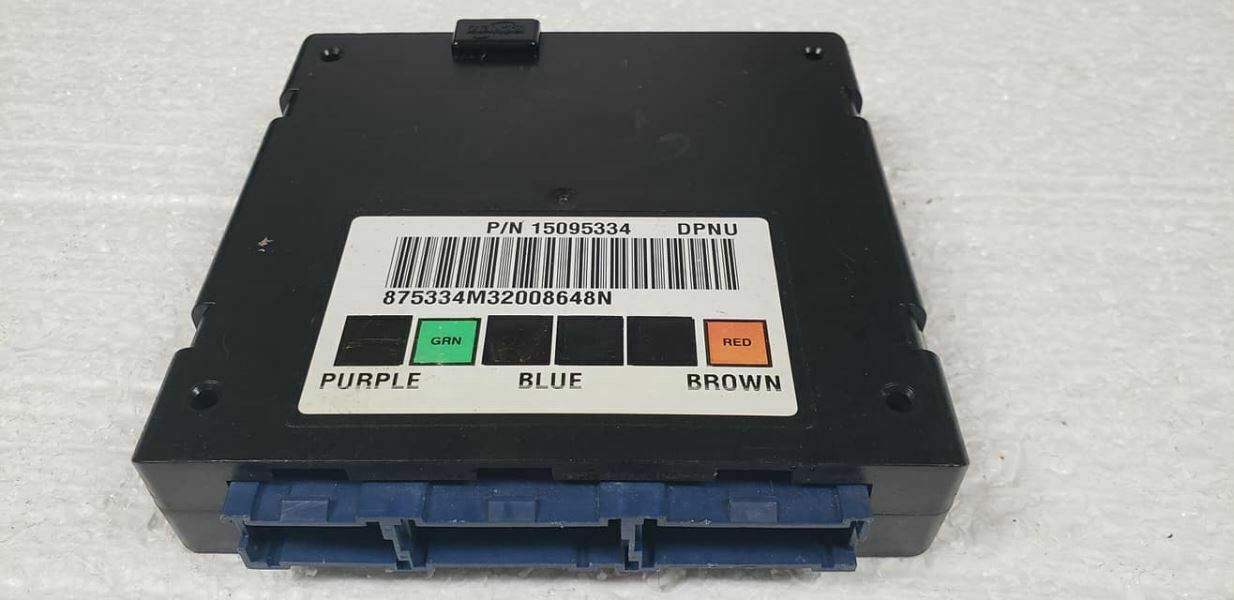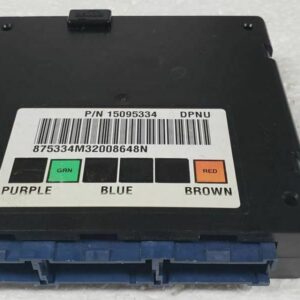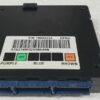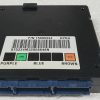Restore Your GM Truck’s Electrical System with a VIN-Programmed BCM
If you’re dealing with bizarre electrical issues in your 2002 Chevy Tahoe, GMC Yukon, or Silverado, the Body Control Module (BCM) is often the culprit. As a technician with over two decades of experience, I’ve seen firsthand how a failing BCM can turn a reliable truck into a source of constant frustration. It’s the central command for everything from your power windows and locks to the security system. When it fails, it creates a cascade of problems that can be a nightmare to diagnose. This isn’t just a replacement part; it’s a direct solution, delivered to your door already programmed with the latest GM software for your specific vehicle. All we need is your VIN to make this a true plug-and-play fix.
From the Diagnostic Bay: The Case of the Haunted Silverado
A customer brought in a 2002 Silverado 2500 with a list of complaints that sounded like the truck was possessed. The dome light would flicker randomly, the radio would shut off, and the ‘Security’ light would stay on, sometimes preventing the truck from starting. They had already replaced the battery and checked the grounds. After hooking up my scan tool, I saw a slew of U-codes (communication errors) pointing to a network issue. The common denominator was the BCM. Instead of a costly and time-consuming repair at the dealer, we installed one of these VIN-programmed modules. The installation was straightforward, and once connected, every single issue vanished. It’s a perfect example of how the right part saves hours of guesswork and gets the job done correctly the first time.
Is Your GM Truck or SUV Showing These Signs?
A faulty BCM can manifest in numerous ways. If you’re experiencing any of the following, it’s a strong indicator that your BCM needs attention:
- ✔ Erratic or non-functional power windows, door locks, or mirrors.
- ✔ Interior or exterior lights flickering, staying on, or not working at all.
- ✔ The security or anti-theft system light is illuminated, causing a no-start condition.
- ✔ Gauges on the instrument cluster behaving erratically or not working.
- ✔ The radio or climate control system randomly shuts off or acts up.
- ✔ Diagnostic trouble codes (DTCs) related to lost communication, such as U0140, U0155, or other U-codes.
A Straightforward Guide to Your BCM Installation
Replacing the 2002 Tahoe BCM is a manageable job for a confident DIYer. While the exact location varies slightly by model, the process is generally similar.
- Safety First: Always disconnect the negative terminal from your vehicle’s battery before starting any electrical work.
- Locate the BCM: On most trucks and SUVs like the Tahoe or Sierra, the BCM is located under the driver’s side of the dashboard, near the steering column. On vans like the Astro or Safari, it’s often behind the center dash area.
- Remove Trim Panels: You may need to remove a lower dash panel or knee bolster to gain access. These are typically held in by a few screws or clips.
- Disconnect and Remove: Carefully unplug the electrical connectors from the old BCM. They have locking tabs that need to be depressed. Once disconnected, unbolt the module from its mounting bracket.
- Install the New BCM: Mount your new, pre-programmed BCM in the same location and securely reconnect all electrical harnesses. Ensure they click into place.
- Reconnect and Test: Reinstall any trim panels you removed, then reconnect the negative battery terminal. Turn the key to the ‘On’ position and test all body functions (windows, locks, lights, etc.) to confirm the repair.
Important Post-Installation Information
Because this module is central to many systems, a couple of additional steps may be required after installation:
- Airbag System Sync: If your airbag warning light is on after installation, a simple ‘Setup SDM Primary Key in BCM’ procedure is needed. This requires a professional bi-directional scan tool to sync the new BCM with the airbag system.
- Brake Pedal Position Relearn: On some models, a brake pedal position sensor relearn may be necessary to ensure correct brake light operation and traction control functionality. This can also be performed with a capable scan tool.
Verified Compatibility for Your Vehicle
This Body Control Module is a direct replacement for part numbers 15095334, 15063578, 15081796, 19208537, DKAK, and DPNU. It is guaranteed to fit the following GM models and years. Please verify your vehicle and options below:
ASTRO 02-05 (center dash)
BLAZER S10/JIMMY S15 02-05 (center dash)
ESCALADE 02 (under steering column), 4×2
S10/S15/SONOMA 02-04 (center dash)
SAFARI (GMC) 02-05 (center dash)
SIERRA 1500/2500/3500 PICKUP 02 (under steering column)
SIERRA DENALI 02 (under steering column)
SILVERADO 1500/2500/3500 PICKUP 02 (under steering column)
SUBURBAN 1500/2500 02 (under steering column), 4×2 for 1500
TAHOE 02 (under steering column), 4×2
YUKON 02 (under steering column), 4×2
YUKON XL 1500/2500 02 (under steering column), 4×2 for 1500
Frequently Asked Questions
Why do you need my VIN?
Your Vehicle Identification Number (VIN) allows us to program the BCM with the exact software and settings for your vehicle’s specific options (like power seats, keyless entry, etc.). This ensures it works correctly right out of the box.
Is this a simple plug-and-play installation?
Yes, for the most part. The module is physically plug-and-play. Because it comes pre-programmed, you avoid the complex programming steps required by the dealer. However, as noted, some vehicles may require a simple airbag or brake sensor relearn procedure with a scan tool after installation.
What if my original part number is not 15095334?
This module is a direct replacement for several part numbers, including 15063578, 15081796, and 19208537. As long as your vehicle is on the compatibility list and your old module has one of these numbers, this part will work perfectly.
Do I need to send my old BCM back?
No, there is no core charge for this part. You can keep your original module.
Will this fix my ‘Security’ light issue?
In the vast majority of cases, yes. A failing BCM is the most common cause of a persistent ‘Security’ light and related no-start problems on these GM vehicles. Replacing it with a properly programmed unit typically resolves the issue.



